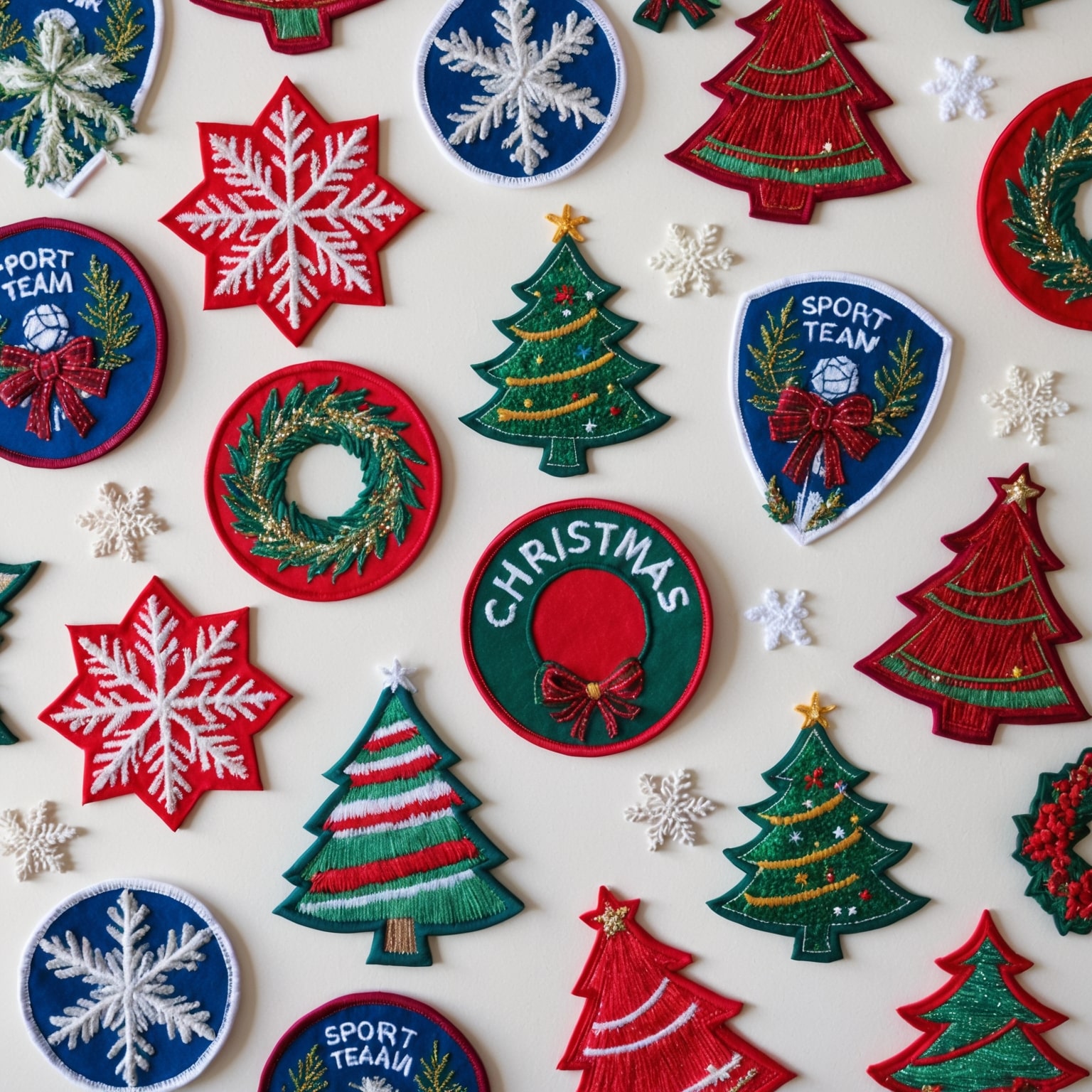Collecting scout patches is a cherished hobby for many, offering a way to celebrate the adventures, achievements, and memories accumulated throughout the scouting journey. From local troop patches to rare, collectible scout patches earned at national or international jamborees, these embroidered emblems tell the stories of growth, camaraderie, and accomplishment. However, like any treasured collection, preserving and displaying your scout patches requires thoughtful consideration and care. In this article, we will provide 10 expert tips for displaying and preserving your scout patch collection, ensuring that your patches remain vibrant and intact for years to come.
1. Understanding the Value of Your Scout Patches
The Significance of Scout Patches
Scout patches are more than just fabric and thread; they are symbols of personal achievements, troop pride, and shared experiences. Each patch in your collection likely carries a story—whether it marks the completion of a specific merit badge, participation in a unique event, or membership in a particular troop or council.
- Personal Achievements: Many scout patches are awarded for completing specific tasks or earning merit badges. These patches represent the skills and knowledge you’ve gained, as well as your dedication to scouting principles.
- Troop and Council Identity: Patches often denote membership in a particular troop, council, or region, helping to build a sense of identity and belonging within the scouting community.
- Event Participation: Special patches are often created for events like jamborees, campouts, or service projects. These limited-edition patches are highly sought after by collectors and serve as mementos of memorable scouting experiences.
Evaluating Collectibility
Not all scout patches are created equal in terms of collectibility. Some patches are more valuable due to their rarity, age, condition, or historical significance. Understanding what makes a patch collectible can help you prioritize which patches to display and how to preserve them.
- Rarity: Patches that were produced in limited quantities, such as those from special events or discontinued merit badges, are often more collectible.
- Condition: Patches in pristine condition, with no fading, fraying, or stains, are typically more valuable to collectors.
- Historical Significance: Patches associated with significant scouting milestones, such as the first national jamboree or the introduction of a new merit badge, are often highly prized.
2. Choosing the Right Display Method
Shadow Boxes and Frames
Shadow boxes and frames are popular options for displaying scout patches because they offer protection while showcasing the patches in an attractive and organized manner.
- Shadow Boxes: A shadow box is a deep frame that allows for three-dimensional objects, like scout patches, to be displayed without being pressed flat. Shadow boxes are ideal for showcasing patches alongside other memorabilia, such as pins, medals, or certificates. When choosing a shadow box, look for one with a UV-protective glass front to prevent fading from sunlight.
- Traditional Frames: Traditional frames with a glass front can also be used to display scout patches. These frames are best for displaying patches in a flat, organized layout. Ensure that the frame is deep enough to accommodate the thickness of the patches and that it has a UV-protective glass front to shield the patches from light damage.
Display Cases and Cabinets
For serious collectors, display cases and cabinets offer a more extensive solution for showcasing a large collection of scout patches.
- Display Cases: Display cases with glass fronts and shelves are perfect for organizing and displaying a large collection of patches. These cases allow you to group patches by theme, troop, or event, making it easy to view and appreciate the collection as a whole. Choose a display case with adjustable shelves to accommodate patches of varying sizes.
- Cabinets: Cabinets with glass doors offer a secure and stylish way to display patches while protecting them from dust and handling. Look for cabinets with built-in lighting to highlight the details of each patch and add visual interest to the display.
DIY Display Boards
For a more creative and customizable approach, consider making your own display board using fabric, cork, or foam board as a base.
- Fabric-Covered Boards: A fabric-covered board can serve as an attractive backdrop for your scout patches. Choose a fabric in a neutral color that complements the colors of your patches. Attach the patches to the fabric using pins, Velcro, or adhesive, depending on how permanent you want the display to be.
- Cork or Foam Boards: Cork and foam boards provide a sturdy base for pinning or attaching patches. These boards are easy to customize and can be cut to fit any space. You can also frame the board for a polished, finished look.
3. Organizing Your Patch Collection
Categorizing Patches
To create a visually appealing and meaningful display, consider organizing your scout patches by category. This can help tell the story of your scouting journey and make the display more engaging.
- By Merit Badge: Group patches by the type of merit badge they represent. This approach highlights the skills and knowledge you’ve gained throughout your scouting experience.
- By Troop or Council: Organize patches by the troop, council, or region they represent. This method showcases the different groups you’ve been a part of and the geographic diversity of your scouting experiences.
- By Event or Date: Arrange patches chronologically by the event or date they commemorate. This approach creates a timeline of your scouting journey and highlights significant milestones.
Creating a Narrative
Your patch collection tells a story, and organizing your patches in a way that reflects that narrative can make your display more meaningful.
- Scouting Journey: Arrange your patches in a way that reflects your personal journey through scouting, from your early days as a Cub Scout to your achievements as a Boy Scout or beyond. This method allows you to showcase your growth and the milestones you’ve reached along the way.
- Thematic Displays: Create thematic displays based on specific aspects of scouting, such as outdoor adventures, leadership roles, or community service. These displays can be grouped together to highlight different facets of your scouting experience.
4. Protecting Patches from Environmental Damage
Shielding from Light
One of the most significant threats to the longevity of collectible scout patches is exposure to light, particularly ultraviolet (UV) light, which can cause colors to fade over time.
- UV-Protective Glass: When framing or displaying patches, use UV-protective glass or acrylic to block harmful UV rays. This type of glass helps preserve the vibrant colors of your patches and extends their lifespan.
- Avoid Direct Sunlight: Place your display in an area that is not exposed to direct sunlight. If possible, choose a location with indirect or ambient lighting to minimize the risk of fading.
Controlling Humidity and Temperature
Humidity and temperature fluctuations can cause damage to patches by promoting the growth of mold, mildew, and bacteria, or by causing the fabric to warp and deteriorate.
- Climate-Controlled Environment: Display your patches in a climate-controlled environment with stable temperature and humidity levels. Ideally, the temperature should be between 65-75°F, and the relative humidity should be around 50%.
- Avoid Basements and Attics: Basements and attics are often subject to temperature and humidity fluctuations, making them less ideal for displaying or storing patches. Instead, choose a room with a more stable environment, such as a living room or home office.
Protecting from Dust and Dirt
Dust and dirt can accumulate on patches over time, leading to discoloration and fabric degradation.
- Sealed Displays: Use sealed display cases, frames, or cabinets to protect your patches from dust and dirt. Regularly clean the glass or acrylic fronts of your displays to keep them free of smudges and dust.
- Cleaning Patches: If dust or dirt does accumulate on your patches, gently clean them using a soft brush or a can of compressed air. Avoid using water or cleaning solutions, as they can cause damage to the fabric and embroidery.
5. Storing Patches When Not on Display
Storing your collectible scout patches properly when they are not on display is crucial for preserving their condition over time. Whether you have limited display space or simply want to rotate your collection, proper storage methods will protect your patches from dust, moisture, and other environmental factors that could cause damage.
Choose the Right Storage Containers
The type of storage container you use can make a significant difference in how well your patches are preserved. Opt for acid-free storage boxes or archival-quality containers designed specifically for preserving textiles. These materials prevent chemical reactions that could lead to discoloration or deterioration of the fabric and embroidery.
- Acid-Free Boxes: Acid-free boxes are ideal for long-term storage as they are made from materials that do not release harmful chemicals. These boxes are often used in museums and archives to store delicate textiles and documents.
- Archival Sleeves: Another option is to store your patches in archival sleeves made of Mylar or polyethylene. These sleeves are clear, allowing you to view your patches without exposing them to the elements. They also prevent the patches from coming into contact with each other, reducing the risk of abrasion or color transfer.
- Climate-Controlled Storage: If you have a particularly valuable collection, consider storing your patches in a climate-controlled environment. Temperature and humidity fluctuations can cause fabrics to expand and contract, leading to damage over time. A consistent environment will help maintain the integrity of your patches.
Organize by Theme or Era
When storing your patches, consider organizing them by theme, era, or another categorization that makes sense for your collection. This organization not only makes it easier to find specific patches but also adds a layer of protection by minimizing handling and movement.
- Thematic Organization: Group patches by themes such as camping, leadership, or specific events. This method allows you to keep similar patches together, making it easier to curate displays or find patches for specific occasions.
- Chronological Organization: Alternatively, you can organize your patches by the era in which they were issued. This method is particularly useful for collectors who focus on historical patches and want to track the evolution of designs over time.
6. Framing Your Collection
Framing your collectible scout patches is an excellent way to display them while providing protection against dust, light, and physical damage. A well-framed patch display can become a focal point in your home or office, showcasing the beauty and history of your collection.
Choose High-Quality Materials
When framing patches, the quality of the materials used is critical to ensure long-term preservation. Avoid using standard paper mats and wooden frames, as these can release acidic substances that may damage your patches over time.
- Acid-Free Matting: Use acid-free matting to create a barrier between your patches and the frame. Acid-free mats prevent the patches from coming into direct contact with the glass or acrylic cover, reducing the risk of condensation and fabric deterioration.
- UV-Protective Glass: Opt for UV-protective glass or acrylic to shield your patches from harmful ultraviolet rays. Prolonged exposure to UV light can cause colors to fade and fabrics to weaken, so it’s essential to provide this extra layer of protection.
- Non-Adhesive Mounting: To avoid damaging your patches, use non-adhesive mounting methods such as sewing the patches onto the backing fabric or using archival-quality photo corners. Adhesives can discolor and deteriorate over time, so it’s best to avoid them when framing patches.
Consider a Custom Frame
A custom frame allows you to tailor the design to your collection, ensuring that each patch is displayed to its best advantage. Custom frames can be designed to accommodate patches of various sizes and shapes, and you can choose a layout that highlights specific features or themes.
- Multi-Layered Displays: A custom frame with multiple layers or sections can create a dynamic display, allowing you to showcase different aspects of your collection. For example, you can use separate layers for patches from different eras or events, creating a visually appealing and informative display.
- Shadow Boxes: A shadow box is a deeper frame that allows for the display of three-dimensional items. This option is ideal for patches with pins or other embellishments, as well as for displaying patches alongside related memorabilia such as badges, medals, or photographs.
7. Preventing Common Types of Damage
Collectible scout patches, like all textiles, are susceptible to various types of damage if not properly cared for. Understanding the common risks and taking steps to prevent them will help ensure that your patches remain in pristine condition for years to come.
Avoiding Light Damage
As mentioned earlier, exposure to light, particularly UV light, can cause colors to fade and fabrics to deteriorate. To prevent light damage:
- Display in Low-Light Areas: If possible, display your patches in areas that do not receive direct sunlight. Rooms with controlled lighting or display cases with built-in UV filters are ideal.
- Rotate Displays: To minimize the exposure of any single patch to light, consider rotating your displays periodically. This practice ensures that no patch is exposed to light for extended periods, reducing the risk of fading.
Controlling Humidity and Temperature
Fluctuations in humidity and temperature can cause fabrics to expand, contract, and eventually weaken. To protect your patches:
- Stable Environment: Keep your patches in a stable environment with consistent temperature and humidity levels. Avoid displaying or storing patches in basements, attics, or other areas prone to temperature extremes or moisture buildup.
- Use Silica Gel: When storing patches, consider adding silica gel packets to the storage containers. Silica gel absorbs moisture and helps maintain a dry environment, reducing the risk of mold and mildew growth.
Protecting Against Pests
Insects such as moths and carpet beetles are known to damage textiles, including patches. To protect your collection from pests:
- Regular Inspection: Periodically inspect your patches for signs of insect activity, such as small holes, fraying, or webbing. Early detection is key to preventing extensive damage.
- Cedar and Lavender: Natural repellents like cedar blocks or lavender sachets can help deter pests. Place these items in your storage containers or display cases to create a protective barrier.
- Clean Environment: Keep the area where your patches are stored or displayed clean and free of dust and debris. Regular cleaning reduces the likelihood of attracting pests.
8. Cleaning and Maintenance
Regular cleaning and maintenance are essential for preserving the beauty and condition of your collectible scout patches. However, it’s important to handle cleaning with care to avoid damaging the delicate fabrics and embroidery.
Gentle Cleaning Techniques
When it comes to cleaning patches, less is often more. Avoid harsh chemicals and aggressive cleaning methods that could damage the fabric or cause colors to bleed.
- Dusting: Use a soft, dry brush or a clean, lint-free cloth to gently dust the surface of your patches. This method is effective for removing loose dirt and debris without causing abrasion or pulling at the embroidery.
- Spot Cleaning: If a patch becomes soiled, spot cleaning is the safest approach. Dampen a cotton swab or soft cloth with distilled water and gently dab the affected area. Avoid rubbing, as this can push dirt further into the fabric and cause damage.
- Avoid Submersion: Never submerge your patches in water or cleaning solutions. The fabrics and threads used in patches are often delicate and may not withstand prolonged exposure to moisture.
Professional Conservation
For valuable or fragile patches, professional conservation may be the best option. Textile conservators are trained to handle delicate fabrics and can provide specialized cleaning and preservation services.
- Consult a Conservator: If you are unsure about how to clean or preserve a particularly valuable patch, consult a professional conservator. They can assess the condition of the patch and recommend appropriate cleaning and preservation methods.
- Conservation-Grade Materials: If you choose to clean or store your patches yourself, use conservation-grade materials such as acid-free paper, archival-quality storage containers, and soft, natural-fiber brushes. These materials are designed to protect textiles from deterioration and extend their lifespan.
9. Documenting Your Collection
Documenting your collection is an important step in preserving its history and value. By keeping detailed records of each patch, you can create a comprehensive inventory that helps you manage your collection, track its provenance, and share its stories with others.
Creating a Catalog
A well-organized catalog serves as a reference guide for your collection, providing essential information about each patch.
- Digital Catalog: Consider creating a digital catalog that includes photographs and descriptions of each patch. Digital catalogs are easy to update and can be shared with other collectors or displayed on a website or social media platform.
- Detailed Descriptions: For each patch, include detailed descriptions that cover the patch’s origin, date of acquisition, condition, and any unique features or historical significance. This information adds context to your collection and enhances its value.
- Provenance Records: If possible, document the provenance of each patch, including any previous owners, the history of the unit or event it represents, and any relevant anecdotes. Provenance records are especially important for rare or valuable patches, as they help establish authenticity and historical significance.
Photographing Your Collection
High-quality photographs are an essential part of documenting your collection. Clear, well-lit images capture the details of each patch and provide a visual record that can be used for insurance purposes, cataloging, or sharing with others.
- Use Natural Light: Photograph your patches in natural light to capture their true colors and textures. Avoid using flash, which can create harsh shadows and reflections.
- Macro Photography: For detailed close-ups, consider using a macro lens or the macro setting on your camera. This technique allows you to capture the fine details of the embroidery and any unique features of the patch.
- Organized Presentation: When photographing your patches, present them in an organized and consistent manner. Use a neutral background to ensure that the patch is the focal point of the image, and label each photo with relevant information such as the patch’s name and catalog number.
10. Sharing and Enjoying Your Collection
One of the most rewarding aspects of collecting scout patches is sharing your collection with others. Whether you display your patches at home, participate in patch trading events, or share your collection online, there are many ways to enjoy and celebrate your patches.
Displaying at Home
Create a dedicated space in your home where you can display and enjoy your patches. Whether it’s a wall display, a framed collection, or a tabletop exhibit, a well-curated display allows you to showcase your patches and share their stories with family and friends.
- Rotating Displays: To keep your display fresh and engaging, consider rotating the patches you feature. This practice allows you to highlight different aspects of your collection and gives each patch its moment in the spotlight.
- Interactive Displays: Create interactive displays that invite viewers to learn more about the patches and the stories behind them. For example, you could include QR codes that link to online resources, videos, or detailed descriptions of the patches.
Participating in Patch Trading Events
Patch trading events are a great way to connect with other collectors, discover new patches, and share your collection with a wider audience. These events often include opportunities to trade patches, attend workshops, and participate in discussions about patch collecting.
- Networking with Collectors: Use patch trading events as an opportunity to network with other collectors and learn from their experiences. Building relationships with other collectors can lead to valuable insights, new acquisitions, and lifelong friendships.
- Showcasing Your Collection: If you attend a patch trading event, consider bringing a selection of your favorite patches to showcase. Displaying your collection at these events can spark conversations, inspire others, and provide a platform for sharing the history and significance of your patches.
Sharing Online
In the digital age, sharing your collection online is easier than ever. Social media platforms, blogs, and online forums offer opportunities to connect with a global community of patch collectors and enthusiasts.
- Social Media: Use social media platforms like Instagram, Facebook, and Pinterest to share photos of your collection, connect with other collectors, and participate in discussions about patch collecting. Hashtags related to patch collecting can help you reach a wider audience and discover new content.
- Blogs and Websites: Consider starting a blog or website dedicated to your patch collection. This platform allows you to share detailed stories, historical insights, and personal reflections on your collection. You can also use your blog to document the process of collecting, preserving, and displaying your patches.
Conclusion
Collecting scout patches is a rewarding and meaningful hobby that connects you to the rich history and traditions of scouting. By following these expert tips for displaying and preserving your collectible scout patches, you can ensure that your collection remains in excellent condition for years to come. From choosing the right display methods and storage solutions to protecting your patches from damage and documenting their history, each step you take contributes to the longevity and value of your collection.
As you continue to build and curate your collection, remember that the true value of your patches lies not just in their rarity or condition, but in the stories they tell and the memories they hold. Whether you’re a seasoned collector or just starting out, your scout patches are a testament to the spirit of adventure, service, and community that defines the scouting experience. By preserving and sharing these patches, you honor that legacy and keep it alive for future generations to enjoy.
If you are interested in purchasing high-quality custom patches, feel free to call us at 1-877-503-8485 or fill out one of our FREE quotes here.




